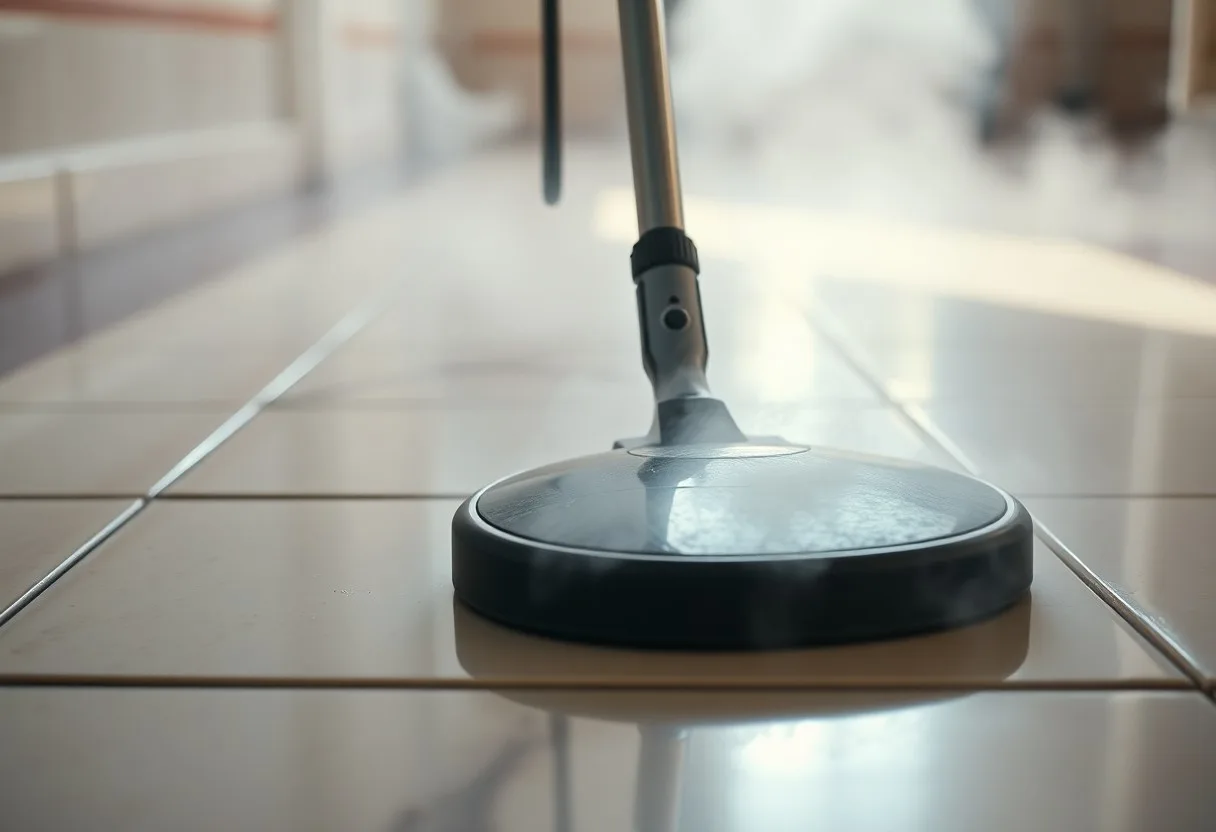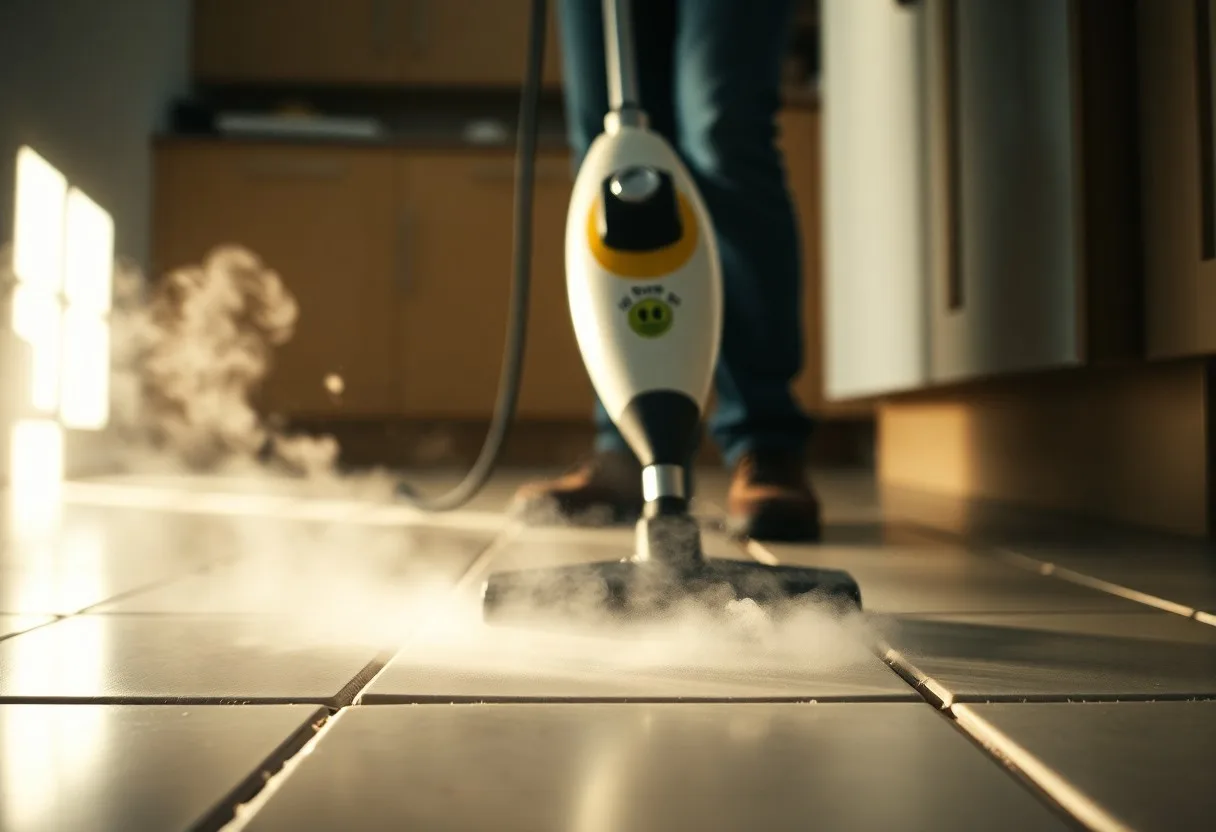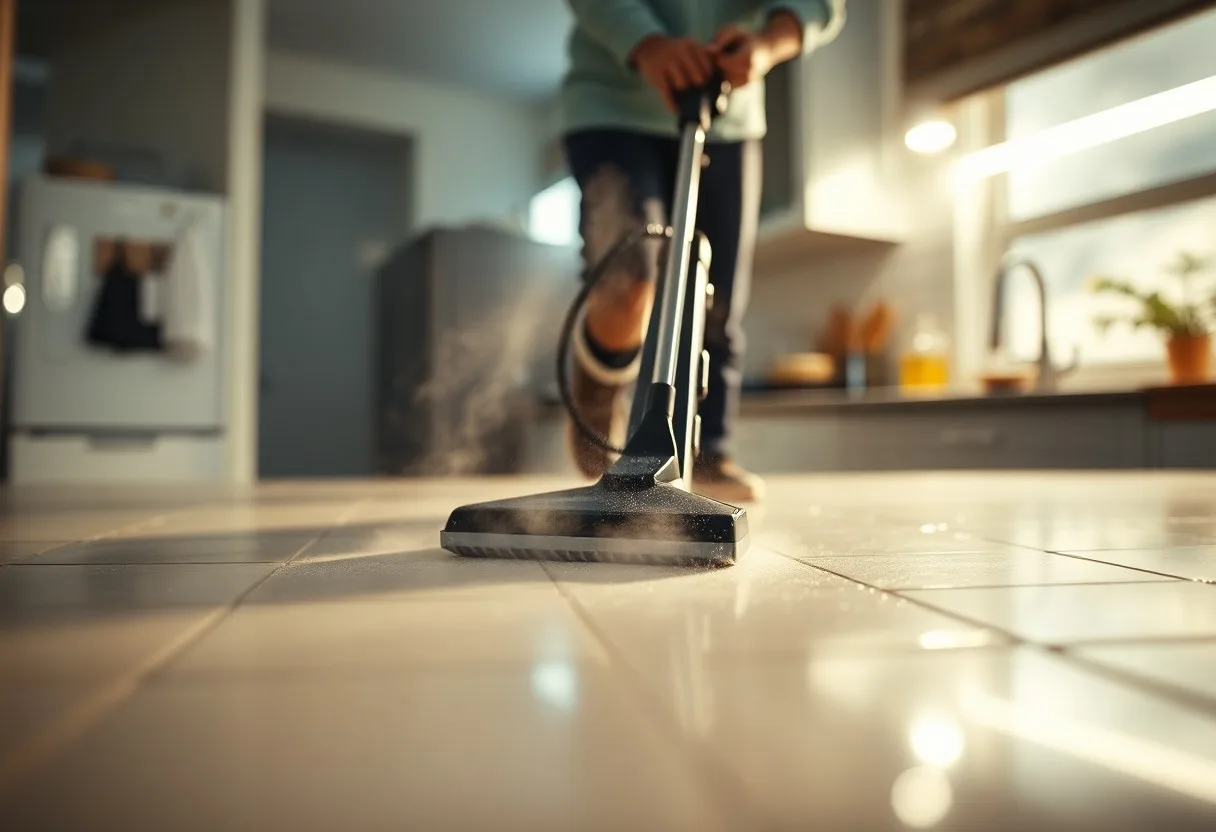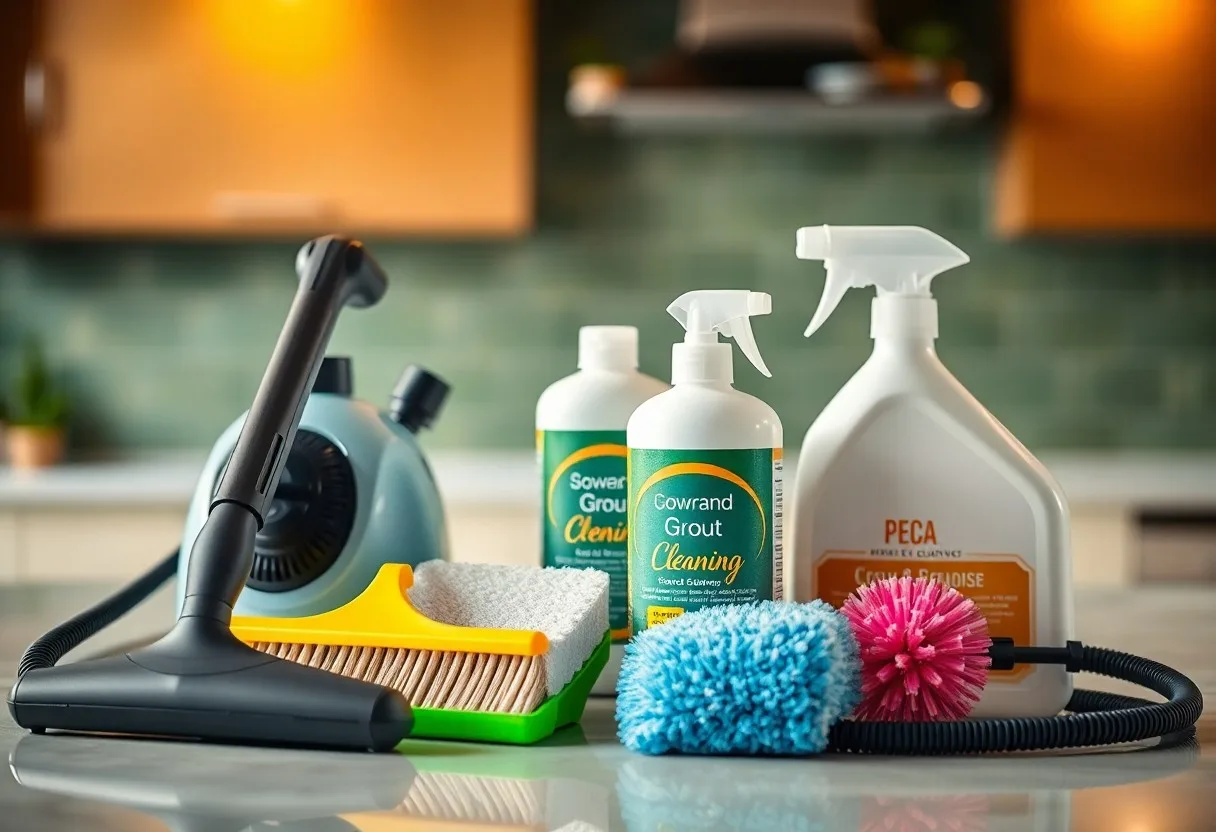Safely Clean And Revive Your Tile & Grout.Just like any other area in your home, your tile and grout can benefit from a thorough cleaning to enhance their appearance and longevity. In this guide, you will discover effective methods to safely clean your tile and grout without causing damage. By using the right products and techniques, you can revive the original colors of your surfaces while maintaining a healthy living environment. Follow these steps to ensure your tile and grout look their best and last longer.
Key Takeaways:
- Utilize a mixture of baking soda and vinegar for an effective and safe method to tackle tough stains and grime.
- Use a soft-bristle brush or an old toothbrush to gently scrub the tiles and grout without causing damage.
- Regular maintenance, such as sweeping and mopping, can prevent the buildup of dirt and maintain the appearance of your tile and grout.
1. Use pH-neutral cleaners for safe tile cleaning.
2. Avoid harsh chemicals to protect grout integrity.
3. Regularly mop to prevent dirt buildup.
4. Scrub grout with a soft-bristle brush.
5. Rinse thoroughly to eliminate cleaning residues.
6. Seal grout annually for long-lasting protection.
Understanding Tile and Grout
For homeowners, understanding the differences between tile and grout is necessary to maintaining the beauty and longevity of your flooring. Tile is the durable surface that withstands wear and tear, while grout fills the gaps between tiles, providing aesthetics and preventing moisture buildup. When you know how these materials work together, you can better care for your surfaces and avoid costly repairs.
Types of Tile Materials
For your flooring choices, various tile materials can be employed, each with unique characteristics. These include:
- Ceramic – Affordable and versatile for different styles.
- Porcelain – Denser and less porous, great for high traffic areas.
- Natural Stone – Unique appearance, but requires more maintenance.
- Glass – Offers elegance and easy cleaning.
- Vinyl – Budget-friendly and available in various designs.
This insight can assist you in selecting the right tile for your home.
| Tile Type | Key Features |
|---|---|
| Ceramic | Affordable and versatile |
| Porcelain | Durable and low moisture absorption |
| Natural Stone | Unique looks and texture |
| Glass | Elegant appearance and easy maintenance |
| Vinyl | Cost-effective and stylish options |
Importance of Grout Maintenance
Understanding the role of grout is key to ensuring your tiled surfaces remain appealing and functional. Grout is a protective barrier against dirt and moisture that can compromise your tiles, leading to unsightly stains and potential mold growth. By maintaining your grout, you not only extend the lifespan of your tiles but also enhance the overall look of your space. Grout Maintenance is necessary in keeping your tiles and spaces looking their best. Neglecting grout can lead to dirt accumulation and provide a breeding ground for mold and mildew, which can eventually damage your tiles and affect indoor air quality. Regularly sealing and cleaning your grout can help prevent these issues, ensuring that your home remains a healthy environment. By taking proactive measures now, you protect your investment in your flooring and maintain an inviting atmosphere.
Essential Cleaning Supplies
Clearly, having the right cleaning supplies is vital for effectively cleaning and reviving your tile and grout. A high-quality cleaner designed specifically for tiles and grout, along with a mild detergent, can help in removing stubborn stains and dirt. You will also need a good scrub brush, a mop, and microfiber cloths to ensure that your efforts yield the best results. Don’t forget to have protective gear, like gloves, to keep your hands safe from chemicals and grime.
Recommended Cleaning Products
Recommended products for tile and grout cleaning include a pH-neutral tile cleaner, a commercial grout cleaner, and natural alternatives like vinegar and baking soda. For persistent stains, consider a specialized stain remover that targets specific types of discoloration. Always read labels carefully to ensure the products you choose are suitable for your tile material.
Tools for Effective Cleaning
Cleaning your tile and grout effectively requires specific tools to achieve the best results. You’ll need a sturdy scrub brush with stiff bristles to penetrate the grout lines and loosen dirt. A mop with a microfiber pad is excellent for broader tile surfaces, while a toothbrush can help tackle the tight corners and edges. Additionally, a spray bottle can help you apply your cleaning solution evenly without wasting product.
To ensure you’re prepared for the cleaning process, invest in these necessary tools. Using a scrub brush allows you to apply the right amount of pressure on tough stains, while a microfiber mop helps trap dirt and moisture without scratching your tiles. A toothbrush is perfect for those hard-to-reach areas, providing precision cleaning. Having a spray bottle on hand makes it easy to manage your cleaning solution application, giving you better control and minimizing mess. With the right tools, you can efficiently revitalize your tile and grout.
Step-by-Step Cleaning Process
Not all cleaning methods for tile and grout are the same; a structured approach is necessary for effectiveness. Follow this step-by-step cleaning process for optimal results:
Cleaning Steps
| 1. Pre-Cleaning Preparations | Gather supplies and remove furniture. |
| 2. Cleaning Techniques | Apply cleaning solution and scrub. |
| 3. Rinsing and Drying | Rinse thoroughly and dry the surface. |
Pre-Cleaning Preparations
Beside choosing the right cleaning products, you need to prepare the area by moving any furniture, rugs, or mats. This will give you access to all surfaces needing attention, ensuring efficient cleaning without any obstructions.
Cleaning Techniques
Preparations are important before exploring into cleaning. Start by testing your cleaning solution on a small, hidden area to ensure it doesn’t damage your tiles or grout. Next, apply the solution directly to the surface and use a stiff-bristled brush for scrubbing, focusing on stained or dirty areas.
This methodical approach ensures you can tackle even the toughest stains effectively. Whether using a homemade solution or a commercial cleaner, you are likely to see significant enhancements in the appearance of your tiles and grout. Periodically changing your scrubbing direction will also help to dislodge stubborn dirt.
Rinsing and Drying
The final step involves rinsing the area to eliminate any remaining cleaning solution. Use a mop or clean cloth soaked in water to remove any residue before drying the surface thoroughly. Ensuring your tiles are completely dry helps prevent future mold or grime build-up.
Consequently, a thorough rinsing will not only enhance the cleanliness but also help maintain the longevity of your tile surfaces. By drying effectively, you avoid mildew and maintain a sparkling finish for your flooring, leaving it looking brand new.
Reviving Your Tile and Grout
To effectively revive your tile and grout, consider using specialized cleaning solutions that help restore the original shine and color. For an in-depth guide on techniques and products, check out How to Clean and Restore Tile and Grout – UDT. Consistent maintenance is key to keeping your surfaces looking fresh and preventing further damage. By integrating these methods into your cleaning routine, your tiles can regain their brilliance.
Restoring Grout Color
Below, you can explore effective methods for restoring grout color, such as using grout pens or color sealers. These products come in different shades and allow you to cover stains or fading while enhancing the overall look of your tiled spaces. Choose a color that closely matches your existing grout for a seamless finish.
Sealing Grout for Longevity
An important step in maintaining your tiled surfaces is sealing the grout to protect it from stains and moisture. Sealing creates a barrier that can prolong the life of the grout and makes cleaning easier. Make sure to use a high-quality sealer specifically designed for grout.
To ensure maximum protection, it is advisable to apply a high-quality grout sealer every 1-2 years, depending on the traffic in the area. This practice can help prevent mold and mildew growth, which can compromise the integrity of your grout. Additionally, a well-sealed grout line can make routine cleaning a breeze, as dirt and spills are less likely to penetrate. Always follow the manufacturer’s instructions for application to achieve the best results.
Preventive Tips for Future Maintenance
Once again, implementing some preventive measures can go a long way in maintaining your tile and grout. Consider the following tips:
- Seal your grout regularly to protect against stains.
- Use mats or rugs in high-traffic areas to reduce dirt buildup.
- Wipe spills immediately to prevent surface damage.
- Utilize a squeegee after showers to reduce moisture.
This will help keep your surfaces looking fresh for longer. For more insights, check out How To Clean Grout: 7 Efficient Ways To Renew Old ….
Regular Cleaning Schedule
Along with these preventive tips, establishing a regular cleaning schedule can significantly enhance the longevity of your tile and grout. Aim to clean your surfaces every week to prevent grime and dirt buildup.
Avoiding Common Cleaning Mistakes
The most effective cleaning strategies can backfire if you make common cleaning mistakes. Understanding the right techniques will help you avoid damaging your surfaces.
Avoiding common cleaning mistakes is important for maintaining the quality of your tile and grout. Using harsh chemicals can lead to discoloration and weaken the grout. Additionally, scrubbing too aggressively may damage tile finishes. Be cautious of using abrasive tools that could scratch your tiles. Instead, opt for gentle cleaning solutions and soft cloths or brushes to preserve your surfaces’ integrity. Following these simple guidelines helps ensure your tiles and grout remain in optimal condition over time.
When to Seek Professional Help
After trying various cleaning methods, if your tile and grout still look dull or stained, it may be time to consult the experts. You should seek professional help when faced with severe discoloration or damage that home remedies cannot resolve. Professionals possess advanced cleaning tools and techniques that can effectively restore the appearance of your surfaces. Additionally, if you notice signs of mold or mildew that could pose a risk to your health, don’t hesitate to get a specialist involved for thorough and safe remediation.
Q: What are the best cleaning solutions to use for tile and grout?
A: There are several effective cleaning solutions you can use to safely clean tile and grout. A mixture of warm water and mild dish soap is a great starting point. For tougher stains, a paste made of baking soda and water can be applied directly to the grout lines. Additionally, vinegar can be used for its natural cleaning properties, but it’s important to avoid using it on natural stone tiles, as the acid can damage the surface. Always test any cleaning solution on a small, inconspicuous area first to ensure it does not harm the tile or grout.
Q: How often should I clean my tile and grout?
A: The frequency of cleaning tile and grout depends on the area and the amount of foot traffic it receives. High-traffic areas, like kitchens and bathrooms, may require cleaning weekly, while less frequented spaces can be cleaned monthly. Regular maintenance, such as sweeping or vacuuming to remove dirt and debris, can help extend the time between deep cleanings. In addition, addressing spills and stains promptly can prevent them from becoming embedded in the grout lines.
Q: What tools are recommended for cleaning tile and grout effectively?
A: Several tools can enhance your tile and grout cleaning efforts. A soft-bristle brush or an old toothbrush is excellent for scrubbing grout lines without damaging the tile. For larger areas, a steam cleaner can be very effective, using heat to lift dirt and stains. Microfiber cloths work well for wiping down surfaces after cleaning. Additionally, make sure to have a mop for cleaning tile floors and a bucket for rinsing cleaning solutions. When using any tools, ensure they are gentle enough to avoid scratching the tiles.




